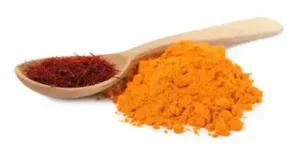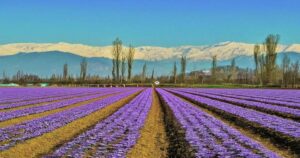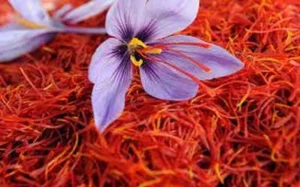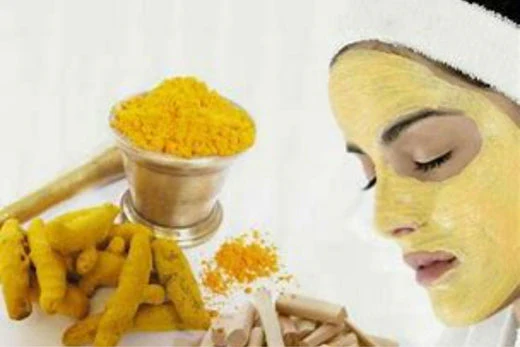For centuries, India has been a treasure trove of natural beauty remedies, with kitchens doubling as apothecaries and spice racks holding secrets to glowing skin. Among the plethora of traditional ingredients passed down through generations, two stand out not only for their historical relevance but also for their continued dominance in modern Indian skincare—saffron and turmeric.
These golden ingredients, often associated with festive dishes and Ayurvedic rituals, have transcended culinary and religious uses to become pillars in both homemade and commercial beauty products. As Indian consumers increasingly turn toward clean and culturally rooted skincare, saffron and turmeric continue to reign supreme—bridging ancient wisdom with modern beauty science.
A Legacy Rooted in Ayurveda
India’s traditional medicine system, Ayurveda, has always emphasised the use of natural elements to balance the body, mind and spirit. Saffron (locally known as kesar) and turmeric (haldi) are considered tridoshic—able to balance all three body types (Vata, Pitta, Kapha) when used correctly.

“Turmeric is known for its anti-inflammatory and antiseptic properties,” explains Dr. Niharika Joshi, an Ayurvedic practitioner based in Rishikesh. “It treats acne, lightens pigmentation, and improves blood circulation, making it ideal for both face and body care.”
Saffron, on the other hand, is often seen as a luxury ingredient associated with royalty and opulence. “It is considered a varnya herb in Ayurveda—meaning it enhances the skin’s radiance,” Dr. Joshi adds. “Used regularly, saffron can help improve complexion, reduce dark circles, and even out skin tone.”
The Kashmiri Connection
While turmeric is grown across India, saffron has deep ties to Kashmir. The Pampore region in the Kashmir Valley is home to one of the finest varieties of saffron in the world. For generations, local women have used saffron in their skincare routines, often soaking a few strands in milk or rose water overnight and applying it as a face mask in the morning.

“Saffron is our pride,” says Shabnam Jan, a Pampore-based entrepreneur who now sells saffron-infused beauty products online. “Our grandmothers always told us to use kesar for bridal glow. Now, customers from across India want our products for the same reason.”
Jan’s brand is one of many that have sprung up across Kashmir, as demand for artisanal, saffron-based skincare booms. The popularity of Instagram reels showcasing traditional Kashmiri skincare rituals has only accelerated this trend.
Scientific Backing Meets Tradition
What makes these traditional ingredients even more powerful is the growing body of scientific research that validates their efficacy.
Turmeric’s active compound, curcumin, has been widely studied for its antioxidant and anti-inflammatory effects. Several dermatological studies have shown that topical application of curcumin-based formulations can reduce acne, fade scars, and relieve skin conditions like psoriasis and eczema.

Saffron, meanwhile, contains crocin, crocetin, and safranal—compounds known for their antioxidant and anti-depressant properties. When applied to the skin, saffron can help repair damage caused by UV radiation, promote collagen production, and improve blood flow.
“Indian brands are now investing in labs to extract these active compounds and use them in concentrated, safe forms,” says Sneha Mehta, a cosmetic chemist based in Mumbai. “This allows us to deliver the same benefits without relying on crude kitchen remedies.”
Homemade Remedies That Still Rule
Despite the growth of commercial beauty brands, homemade skincare recipes remain a favourite among Indian households. During the wedding season, turmeric-based ubtan ceremonies are a common sight, with brides and grooms smeared in fragrant pastes of haldi, sandalwood, chickpea flour and milk to detoxify the skin and impart a natural glow.
One popular DIY recipe includes a blend of turmeric, honey, and yoghurt—used as a face mask to combat acne and dullness. Another age-old remedy combines soaked saffron strands with raw milk and crushed almonds, applied as a brightening serum.
“These home remedies are free of preservatives, cost-effective, and incredibly effective when used consistently,” says beauty blogger Aanya Verma, who runs a YouTube channel on traditional Indian skincare. “There’s a sense of emotional comfort in using the same recipes that your mother or grandmother used.”
Commercial Beauty Brands Embrace the Gold
The booming Ayurvedic and herbal skincare market in India—estimated to reach Rs 71,000 crore by 2025—has fully embraced the saffron-turmeric duo. Brands like Forest Essentials, Kama Ayurveda, Biotique, Just Herbs, and even international giants like The Body Shop and L’Oréal are incorporating these ingredients into their formulations.
From saffron-infused night creams and face serums to turmeric-rich cleansers and anti-acne gels, these ingredients have become mainstream. Several brands also highlight the use of sustainably sourced Kashmiri saffron, appealing to ethically minded consumers.
“Indian beauty is no longer about whitening or fairness,” says Priya Kapoor, head of marketing at a Delhi-based skincare brand. “It’s about glow, health, and tradition. That’s why saffron and turmeric continue to shine—they deliver visible results and connect emotionally with our culture.”
Beauty With a Purpose
Beyond aesthetics, these ingredients carry emotional and cultural significance. The application of turmeric is often associated with spiritual cleansing and protection from evil. Saffron is used in religious ceremonies, bridal rituals, and traditional healing.
For many women across India, particularly in rural areas, growing turmeric or collecting saffron isn’t just about beauty—it’s a livelihood. Several cooperative societies in Kashmir, Himachal Pradesh, and Tamil Nadu are now run by women who cultivate these ingredients and use them to create skincare products sold both domestically and internationally.
“In a way, turmeric and saffron are not just beauty ingredients. They are cultural stories, economic tools, and symbols of Indian identity,” says sociologist Dr. Meera Sharma.
Looking Ahead
As global beauty trends pivot towards wellness, tradition, and authenticity, Indian ingredients like saffron and turmeric are enjoying a renaissance. Their story is no longer confined to age-old remedies—it is being rewritten by modern brands, backed by science and amplified by social media.
From the saffron fields of Kashmir to kitchen counters in Mumbai and salon shelves in New York, these golden ingredients continue to glow—just like the skin of the countless people who swear by them.
In an industry obsessed with the new, saffron and turmeric prove that sometimes, the most effective beauty secrets are the oldest ones.


